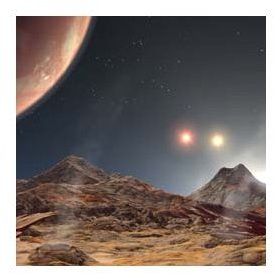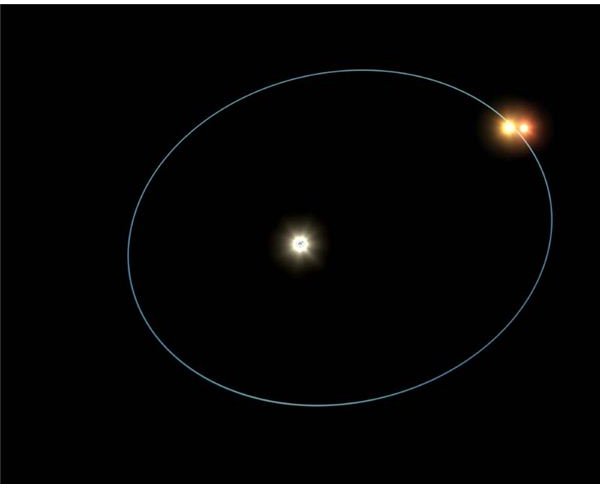Facts about Triple Star Systems
It is often the case that a nebula is large enough it has the correct conditions to form several stars; this is what some have named a “stellar nursery”. Sometimes stars that were formed close together, or come close to each other in their movement through space can have a gravitational effect on each other. When these two stars come close enough to actually become gravitationally locked in an orbit, they become a binary star system. The dynamics of a system like this are relatively straightforward, and astronomers have been able to predict its movement since the time of Kepler. Based on the size of the two stars, they will both orbit a single point in space in between them called the center of gravity.
Not to be confused with a globular cluster, which is more of a loose collection of stars, a triple star system is simply a binary star system that is able to latch onto a third star in such a way that it creates a stable orbit. Triple star systems are much rarer than binary star system for two reasons. For one, space is really big and the odds of three different stars running into each other is pretty rare when compared to just two stars. The other reason is that the mechanics of a triple star system are much more complicated, which leaves more room for error. Unless the stars are orbiting the center of gravity just so, they may be sent crashing into each other in a fiery explosion or fling a star off into space. For the same reasons, triple star systems are much more common than 4 or 5 star systems. A study showed that 551 out of 728 multiple star systems (systems with more than two stars) contained 3 stars.
Trouble with Triple Star Systems
One of the biggest difficulties with triple star systems is just confirming that it’s a triple star system in the first place. A physical multiple

star system is what we have been talking about so far: an actual star system with multiple stars in mutual orbit around each other. This stands in opposition to something called an optical multiple star system. Looking at a patch of sky with a telescope, you will come across stars that appear very close to each other. However, it is more likely that these stars are actually light-years away from each other, and just appear on the same line of sight from the Earth.
Systems with more than one star go as far back as Ptolemy, who suggested that Eta Sagittari was such an object. Galileo didn’t even believe that a system could form with more than one star, instead thinking that all instances of binary or triple stars were merely optical. The first physical triple star system to be discovered was Theta Orionis by the astronomer Christiaan Huygens in 1651.
Sources
https://www.seds.org/messier/bina.html
https://www.rssd.esa.int/index.php?project=HIPPARCOS&page=Double_stars
https://adsabs.harvard.edu/abs/1997A&AS..124…75T
Credits:
Orbit: https://www.nasa.gov/images/content/122381main_pia03521-browse.jpg
Sunset: https://www.nasa.gov/images/content/122377main_pia03520-250.jpg
